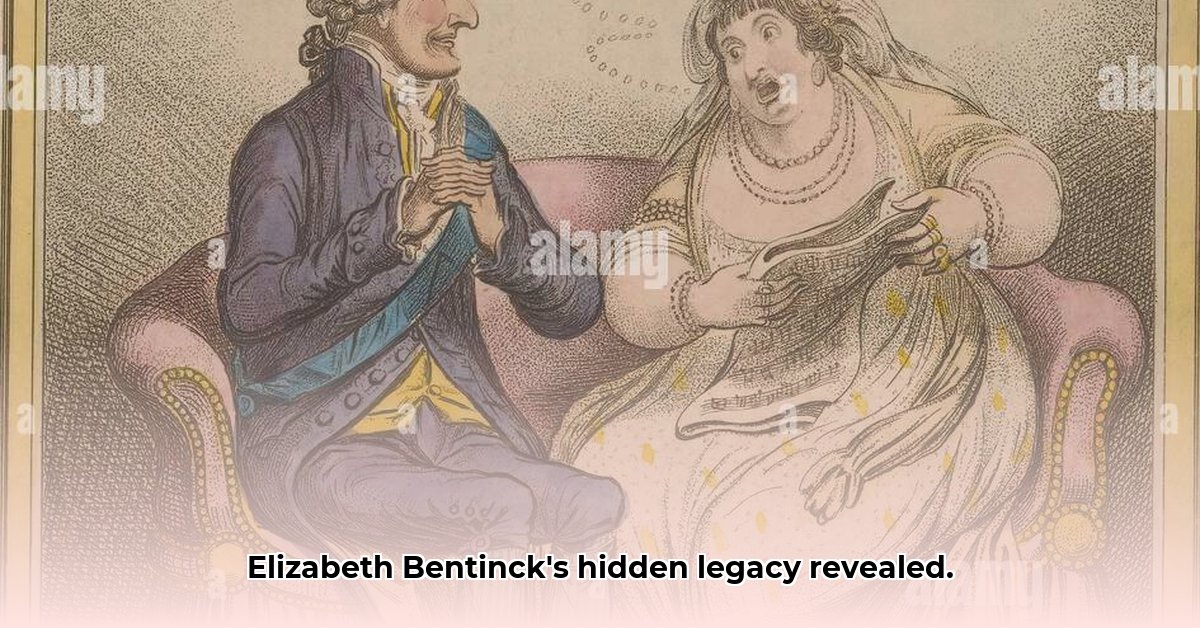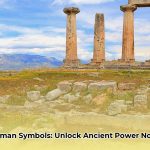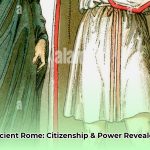Ever heard of Elizabeth Mary Wilhelmina Bentinck? Probably not. She was a fascinating woman who lived a life spanning the 19th and 20th centuries, and while she clearly made her mark, surprisingly little is known about her. For a more in-depth look at her life, see her full biography. This article aims to shed light on her story, piecing together what we do know about her life as an aristocrat, philanthropist, and potential reformer. We’ll examine her lineage within the Bentinck family, her work in education and environmental protection, and explore her role in preserving her family’s history and vast land holdings.
Be warned: the historical record is incomplete. We’ll uncover what we can, highlight the gaps in our knowledge – from conflicting birth dates to the mystery surrounding the extent of her political influence – and suggest avenues for future research. Think of it as a historical detective story; we’ll solve parts of the puzzle, show you where the clues are missing, and suggest where future historians can dig deeper to reveal the full story of this intriguing woman.
Uncovering Elizabeth Bentinck: Aristocratic Lineage and Hidden Influence
The Mysterious Life of Elizabeth Bentinck: A Story Waiting to Be Told
Let’s delve into the life of Elizabeth Mary Wilhelmina Bentinck, a compelling figure from the 19th and 20th centuries. Born into a powerful and influential European aristocratic family, she navigated a rapidly changing world, yet many details of her life remain shrouded in mystery.
Why the limited information? Several factors contribute to the challenge. The private nature of aristocratic life during that era meant many activities and decisions weren’t publicly recorded. The passage of time further complicates tracking down specific details. Available historical records offer glimpses into her life—a life of privilege, charitable work, and perhaps even some subtle political maneuvering. We’ll explore aspects of her life that we can verify, recognizing both the achievements and the limitations of current historical knowledge.
A Life of Privilege: Family, Fortune, and a Time of Great Change
Elizabeth Bentinck inherited more than just wealth; she inherited a legacy deeply intertwined with major historical events and the shifting social landscape of Europe. Her family’s connections stretched across the continent, influencing both politics and society. The Bentinck family, with roots in both the Netherlands and England, occupied a unique position within the European aristocracy.
Imagine the conversations around the family dinner table – the inside information and insights she would have absorbed regarding the significant events of her day! To fully understand Elizabeth’s actions and choices, we must consider the context of her aristocratic upbringing, the expectations placed upon her, and the societal constraints she faced. However, the available documents provide only a partial picture, leaving many details frustratingly obscure and open to interpretation.
A Generous Spirit: Exploring Elizabeth Bentinck’s Philanthropy
Historical records suggest Elizabeth was deeply committed to charitable causes, particularly education and environmental protection—rather progressive for a woman of her time. However, the specifics of her contributions are often vague in the existing documents. Did she personally found schools or support existing educational institutions? Did she fund specific conservation projects, and if so, what were their objectives and outcomes?
While the documents confirm her dedication to these causes, they often lack concrete details. More research is needed to fully understand the scope and impact of her philanthropic work. Exploring records of charitable organizations, local community archives, and Bentinck family papers could reveal more information.
Protecting the Past: Elizabeth Bentinck and the Preservation of Heritage
What about her family’s vast estates, architectural landmarks, and cultural treasures? The limited documents suggest she played a key role in preserving these historic properties and artifacts. What challenges did she face in maintaining these places? What strategic decisions did she make to ensure their survival for future generations?
Exploring estate records, architectural plans, and inventories of artwork could shed light on her preservation efforts. Understanding her approach to managing the Bentinck family’s cultural heritage is crucial to understanding her broader legacy. These questions underscore the need for a more comprehensive collection of historical documents, including personal letters, estate records, and other archival materials not yet publicly accessible.
Politics and Power: The Unanswered Questions
The extent of Elizabeth Bentinck’s involvement in politics remains a subject of speculation. Some documents hint at behind-the-scenes influence, perhaps exerted through her family connections, while others emphasize her focus on philanthropic endeavors. Was she a political player pulling strings from the shadows, or was she primarily focused on direct social action?
Without further evidence, it’s difficult to definitively answer this question. Exploring political correspondence from the period, examining records of government meetings, and analyzing social commentary from the time might provide additional insights into her political activities. More evidence is essential to reach a well-supported conclusion.
Unraveling the Mysteries: Discrepancies and Gaps
One of the most striking inconsistencies in the historical record is Elizabeth Bentinck’s birthdate, with several different dates appearing in various sources. This seemingly small discrepancy highlights a larger problem: the incompleteness and potential unreliability of the historical record itself. It reminds us how fragile historical memory can be and the challenges involved in creating complete biographies, even for someone as prominent as Elizabeth.
Genealogical errors, flawed record-keeping practices, or even intentional alterations to the record could explain these discrepancies. The hope is that undiscovered documents might eventually resolve some of these inconsistencies.
The Search Continues: Future Research
Further research is essential to fully understand Elizabeth Bentinck’s life and legacy. This includes a more thorough exploration of archives – both public and private. Detailed genealogical research could clarify family connections and fill in missing life details. Analyzing personal letters, diaries, and other private documents would shed light on her motivations and actions.
Examining records of organizations she supported, local community archives, and government documents could offer further insights. This research will be vital in comprehensively understanding her contribution to society.
Known Inconsistencies in Existing Historical Records:
| Feature | Discrepancy | Possible Explanations |
|---|---|---|
| Birth Date | Several different birth dates are cited in various sources. | Genealogical errors, flawed record-keeping, intentional changes to the record, or confusion with other family members. |
| Political Role | Accounts of her political influence range widely. | The private nature of aristocratic life and politics; her influence might have been indirect or undocumented. Limited access to relevant political correspondence and government records. |
| Philanthropy | Specific details of her charitable work are scarce. | Incomplete records; many private donations may not have been officially recorded; limited access to private archives; lack of comprehensive documentation of charitable activities at the time. |
The currently available documents provide intriguing clues but not a complete picture of Elizabeth Bentinck’s life. The mysteries of her life are far from solved, and many questions remain unanswered. Further research is needed to fully understand this fascinating woman’s contributions and to appreciate her place within the broader context of European history.
How to Research the Life of a 19th-Century European Aristocrat: Strategies and Methods
Key Takeaways:
- Digitizing primary sources is revolutionizing 19th-century European historical research.
- Challenges exist in source verification, data aggregation, and interpretation.
- A strategic approach, combining diverse resources and meticulous verification, is paramount.
- Elizabeth Bentinck’s life highlights these research complexities.
The Aristocratic Landscape: Context is Key
Unlocking the life of a 19th-century European aristocrat like Elizabeth Bentinck requires understanding their world, its values, and its power dynamics. It’s akin to piecing together a jigsaw puzzle with missing pieces. Her family background – titles, estates, connections – provides crucial context. What was their social standing? What political factions did they align with? What economic resources did they control? Exploring this historical context offers essential clues to her own life and choices.
The role of women in the aristocracy was both restrictive and influential. While they rarely held formal positions of power, they wielded immense social influence, often indirectly through patronage, charitable works, and family connections. Understanding these subtle power dynamics is crucial for interpreting the available historical evidence.
Tracing Philanthropy and Patronage
Elizabeth Bentinck’s philanthropic endeavors, if documented, are vital to understanding her values and impact. Did she champion specific education initiatives, such as establishing schools for girls or supporting scientific research? Was she actively involved in environmental conservation, promoting sustainable land management practices on family estates?
Records of charitable donations, correspondence with organizations, and even newspaper articles might offer glimpses into her philanthropic activities. However, remember that aristocratic generosity was often privately managed, making it challenging to trace specific contributions. Therefore, sources might be scattered, inconsistent, or even entirely absent.
Cultural Preservation: A Legacy in Stone and Paper
Did she actively participate in preserving family estates, transforming them into centers of cultural activity? Did she commission portraits, document family history, or support artistic endeavors? Examining her potential role in cultural preservation involves investigating land records, architectural plans, archival documents, and any surviving family papers or correspondence.
This research requires navigating potentially fragmented archives across multiple locations and languages. Finding these records tests your research skills, but the rewards can be significant, providing valuable insights into her values and priorities.
Political Influence: A Quiet Game
Navigating the political involvement of aristocratic women is particularly tricky. They rarely held direct office or participated openly in political debates. However, their influence was often profound, exerted subtly through family connections,











1 thought on “Uncover Elizabeth Bentinck: 19th-20th Century Documents Reveal a Legacy”
Comments are closed.